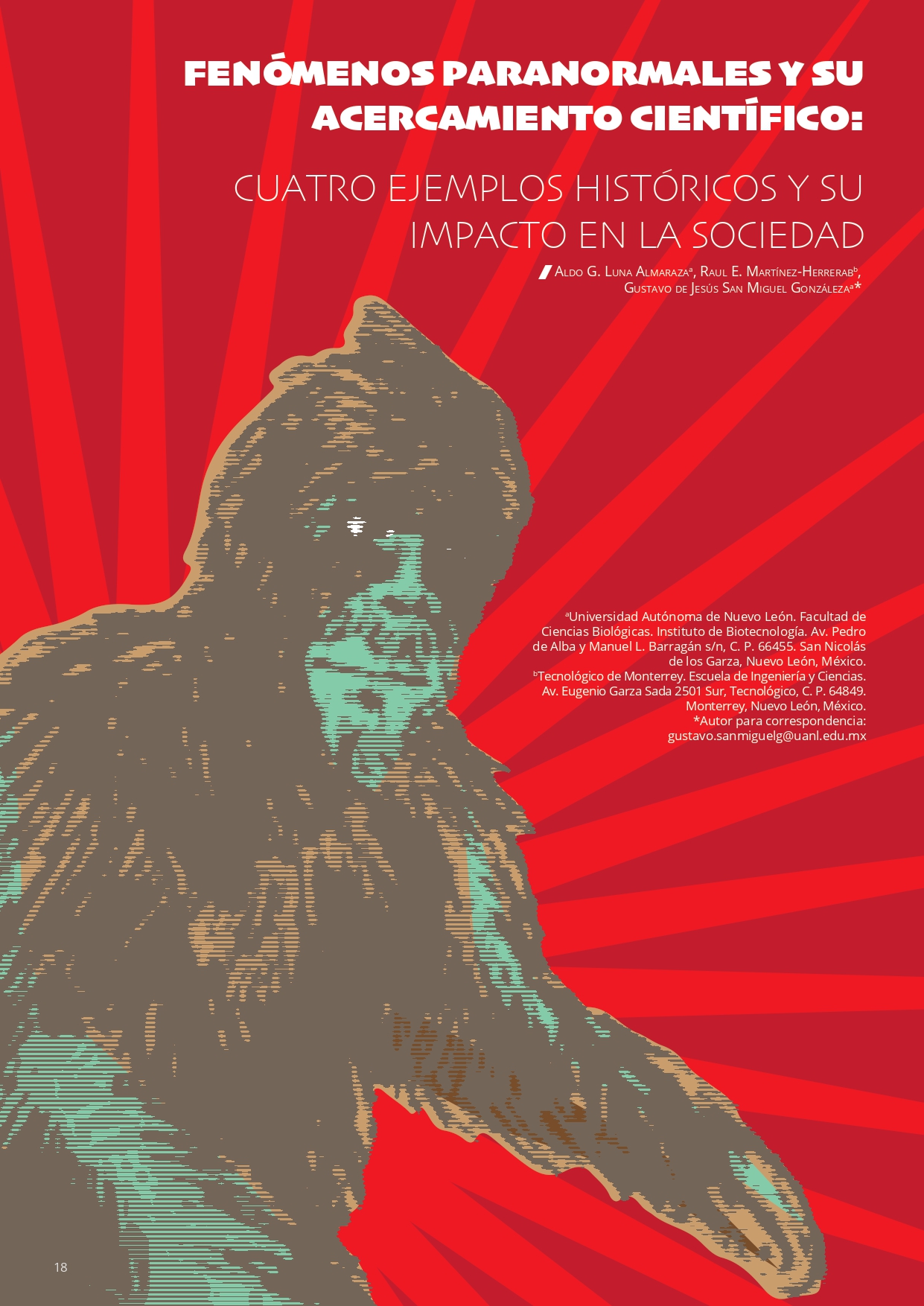Fenómenos paranormales y su acercamiento científico
cuatro ejemplos históricos y su impacto en la sociedad
DOI:
https://doi.org/10.29105/bys7.14-128Keywords:
critical analysis, research, scientific thinking, pseudosciencesAbstract
Paranormal phenomena are defined as all those events and/or practices that are beyond human logic; these are considered the first attempt of primitive man to interpret and dominate nature. Currently, it has been determined that belief in these phenomena is deeply rooted among people whose academic bases are far from scientific thinking, so it is necessary to raise awareness about the use of critical analysis. For this reason, in this article we present a bibliographic analysis of cases related to pseudoscience and occultism, whose scientific approach (through applied research designs) truthfully and forcefully indicates the reality of said phenomena. Likewise, it is concluded that this type of beliefs lead to ignorance and the generation of social prejudices, which is why it is suggested to encourage scientific thinking among society.
Downloads
References
Aarnio, K., M. Lindeman. 2005. Paranormal beliefs, education, and thinking styles. Personality and Individual Differences. 39: 1227–1236. DOI: https://doi.org/10.1016/j.paid.2005.04.009
Albuquerque, U.P., J.G. Melo, M.F. Medeiros, I.R. Menezes, G.J. Moura, A.C. Asfora El-Deir, R.R. Nóbrega Alves, P.M. de Medeiros, T.A. de Sousa Araújo, M. Alves Ramos, R.R. Silva, A.L. Almeida, C. Almeida. 2012. Natural Products from Ethnodirected Studies: Revisiting the Ethnobiology of the Zombie Poison. Evidence-Based Complementary and Alternative Medicine. 2012: 1–19. DOI: https://doi.org/10.1155/2012/202508
Brazier, Y. Williams syndrome: What you need to know. En: https://www.medicalnewstoday.com/articles/220139 (consultado 04/10/23).
CNN (2019). Supuesto ataque de "Pie Grande" o "Bigfoot" en Kentucky (Nota periodística web) En: https://cnnespanol.cnn.com/video/pie-grande-kentucky-parque-arma-campamento-jennifer-montoya-cafe-cnnee/ (Recuperada 05/10/23)
de Oliveira Maraldi, E., M. Farias. 2019. Assessing Implicit Spirituality in a non-weird population: Development and Validation of an Implicit Measure of New Age and Paranormal Beliefs. The International Journal for the Psychology of Religion. 30: 101–111. DOI: https://doi.org/10.1080/10508619.2019.1661198
de Sousa Araujo, T.A., N.L. Alencar, E.L.C. de Amorim, U.P. de Albuquerque. 2008. A new approach to study medicinal plants with tannins and flavonoids contents from the local knowledge. Journal of Ethnopharmacology. 120: 72–80. DOI: https://doi.org/10.1016/j.jep.2008.07.032
Escolá-Gascón, A. 2020. Researching unexplained phenomena: empirical-statistical validity and reliability of the Multivariable Multiaxial Suggestibility Inventory-2 (MMSI-2). Heliyon. 6: e04291. DOI: https://doi.org/10.1016/j.heliyon.2020.e04291
Gutiérrez E.E., R.H. Pine. 2015. No need to replace an “anomalous” primate (Primates) with an “anomalous” bear (Carnivora, Ursidae). ZooKeys. 487:141–154. DOI: https://doi.org/10.3897/zookeys.487.9176
Kozel, B.A., B. Barak, C.A. Kim, C.B. Mervis, L.R. Osborne, M. Porter, B.R. Pober. 2021. Williams syndrome. Nature reviews. Disease primers. 7: 42. DOI: https://doi.org/10.1038/s41572-021-00276-z
Lester, D. (1993) Paranormal beliefs and psychoticism, Personality and Individual Differences, Volume 14, Issue 5, 1993, Page 739, ISSN 0191-8869, https://doi.org/10.1016/0191-8869(93)90122-J DOI: https://doi.org/10.1016/0191-8869(93)90122-J
Littlewood, R., C. Douyon. 1997. Clinical findings in three cases of zombification. Lancet. 350: 1094–1096. DOI: https://doi.org/10.1016/S0140-6736(97)04449-8
Llanes, L.C., N.B. Sa, A.R. Cenci, K.F. Teixeira, I.V. de França, L. Meier, A.S. de Oliveira. 2022. Witches, potions, and metabolites: an overview from a medicinal perspective. RSC Medicinal Chemistry. 13: 405–412. DOI: https://doi.org/10.1039/D2MD00025C
PBS (2014). Clues and Evidence. En: https://www.pbs.org/wnet/secrets/witches-curse-clues-evidence/1501/ (Consultado 05/12/23).
Soriano del Castillo J.M., C. Martínez-Rosillo, N. Sebastià-Fabregat, C. Soler-Quiles. 2014. Microbiología alimentaria y fenómenos paranormales en la historia. Revista Española de Nutrición Humana y Dietética. 18: 238–242. DOI: https://doi.org/10.14306/renhyd.18.4.118
Sykes, B.C., R.A. Mullis, C. Hagenmuller, T.W. Melton, M. Sartori. 2014. Genetic analysis of hair samples attributed to yeti, bigfoot and other anomalous primates. Proceedings of the Royal Society. 281: 20140161. DOI: https://doi.org/10.1098/rspb.2014.0161
Valdemi, I. (2023). 8 de febrero de 1692. Cuando se iniciaron los juicios contra las brujas de Salem (Nota periodística web) En: https://www.laizquierdadiario.com/Cuando-se-iniciaron-los-juicios-contra-las-brujas-de-Salem (Recuperada 05/10/23)
Wayman, E. Did Bigfoot Really Exist? How Gigantopithecus Became Extinct. En: https://www.smithsonianmag.com/science-nature/did-bigfoot-really-exist-how-gigantopithecus-became-extinct-16649201/ (consultado 03/10/23).
Williams, J.M., M. Blagrove. 2022. Paranormal experiences, sensory-processing sensitivity, and the priming of pareidolia. PLoS ONE. 17: e0274595. DOI: https://doi.org/10.1371/journal.pone.0274595







